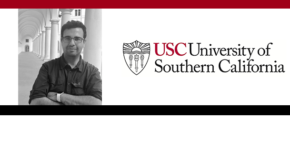 On University of Southern California Week: The Nile River is an important waterway facing an uncertain future.
On University of Southern California Week: The Nile River is an important waterway facing an uncertain future.
Essam Heggy, research scientist in the department of electrical engineering and electrophysics, determines the issues facing the river and its communities.
Essam Heggy is a Research Scientist in the Department of Electrical Engineering & Electrophysics at the USC Viterbi School of Engineering, and at the Rosetta mission project office at the NASA’s Jet Propulsion Laboratory. Heggy obtained both MSc and PhD respectively in 1999 and 2002 on Terrestrial and Planetary Radar Studies with distinguished honors from the Sorbonne University in Paris, France. His research focuses on understanding water evolution in Earth’s arid environments as well as planetary surfaces using radar surface and subsurface characterization methods.
Crisis on the Nile
The iconic Nile River is in crisis. Decades of poor environmental and water management have turned the delta into one of the largest polluted areas on the planet. Millions of people and migrating birds are now at risk of exposure to waterborne contaminants.
Our research shows that large-scale heavy metal pollution, coastal erosion and seawater intrusion pose an existential threat to the Nile River Delta and endanger 60 million people — about twice the population of Texas — in Egypt who depend on its resources for every facet of life.
We analyzed grain size and pollution levels of eight heavy metals in samples of bottom sediment collected from two branches of the Nile River Delta. We had three main findings:
First, we found that sediment at the bottom of the Nile River is highly polluted by heavy metals like cadmium, chromium, lead and more.
We also found that contaminants mainly come from untreated agricultural drainage and municipal and industrial wastewater.
Lastly, heavy metal concentrations could be made worse by increased damming of the Nile. Mega-dams built upstream disrupt the river’s natural flow and sediment flux and thus adversely affect its ability to flush contaminants out into the Mediterranean Sea, leaving toxins to gradually build up in bottom sediment.
Today, the civilization that thrived in a scenic waterscape for over 7,000 years must face the reality of this irreversible large-scale environmental degradation.
